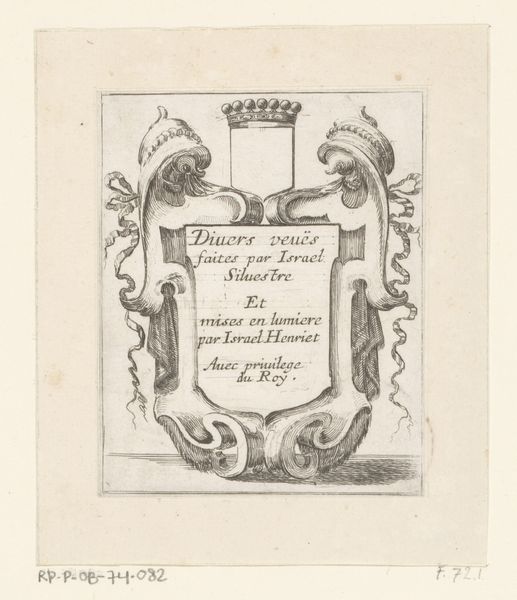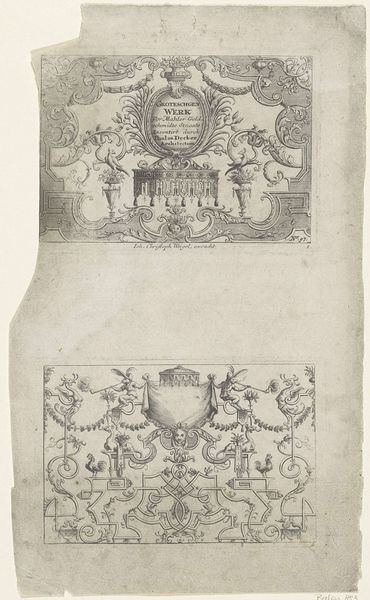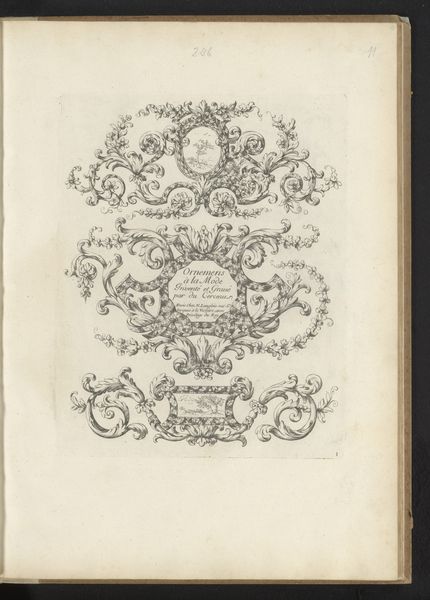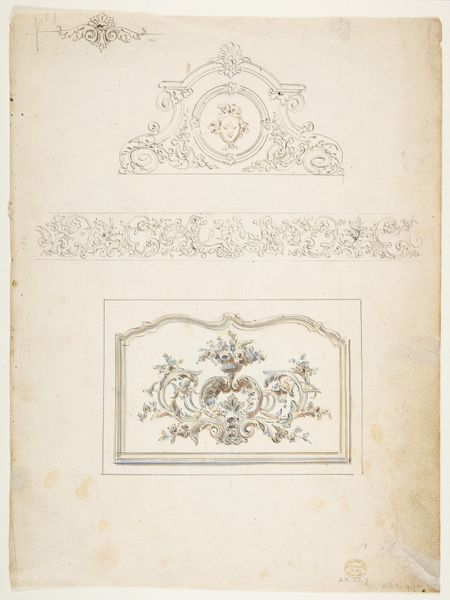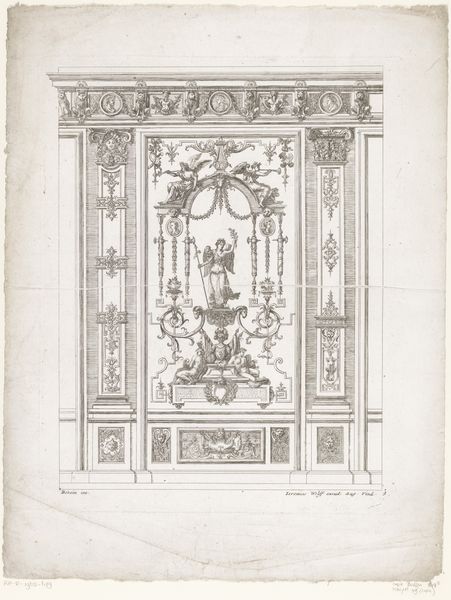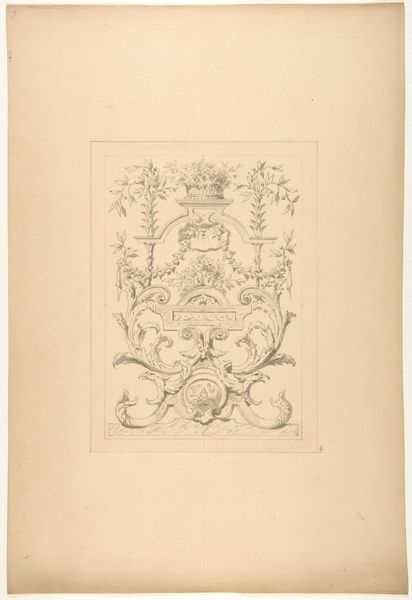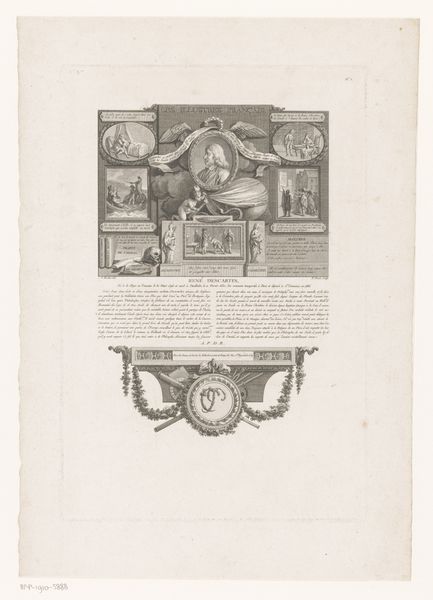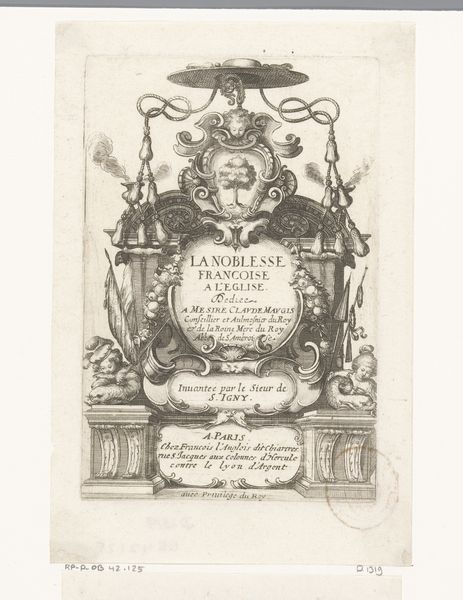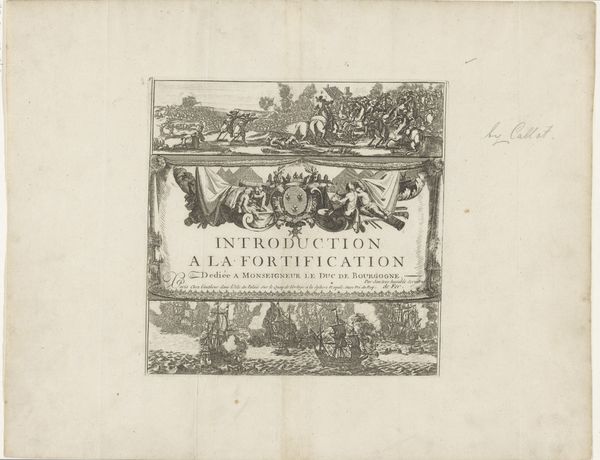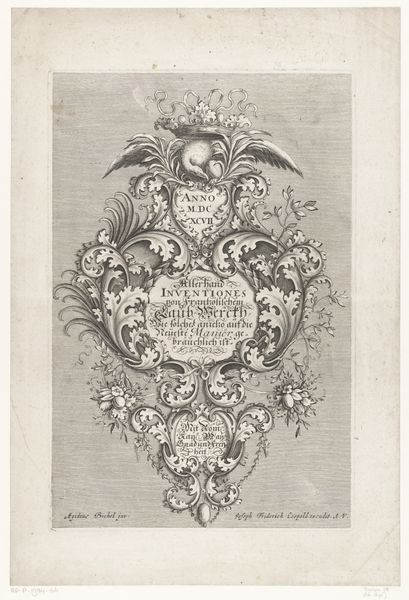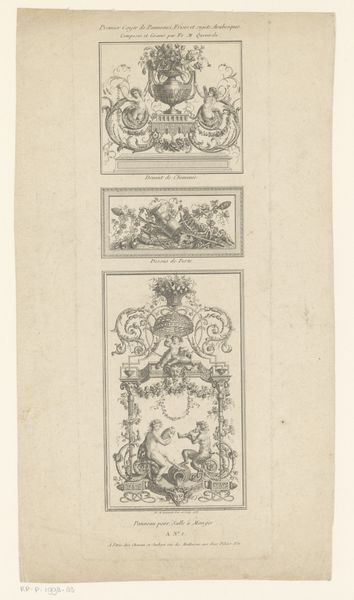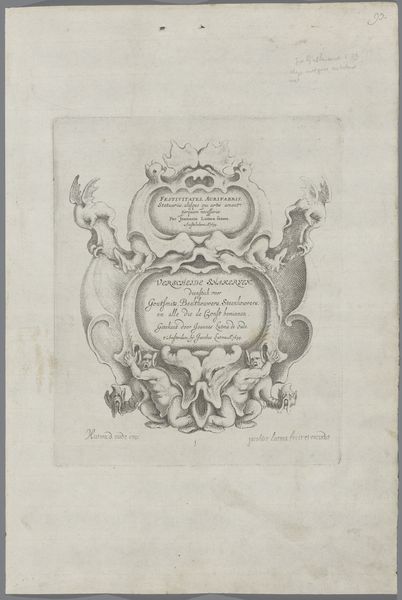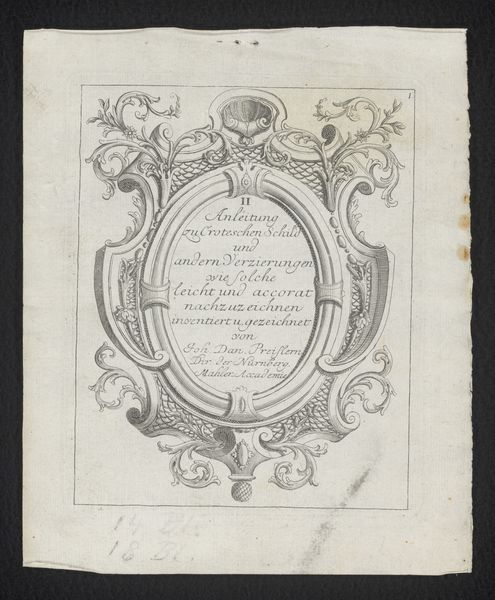
graphic-art, print, engraving
#
graphic-art
#
garden
#
baroque
# print
#
old engraving style
#
landscape
#
engraving
Dimensions: height 141 mm, width 100 mm
Copyright: Rijks Museum: Open Domain
Curator: Gédéon Légaré created this print, "Titelprent: Livre de Feuilles d'Orfevrerie," sometime before 1647. It’s an engraving. Editor: It has a curious formality to it. The meticulously etched lines create a rigid structure and still manages a pleasing representation. The stark black and white evokes a sense of established order, perhaps of nobility, gazing out from within. Curator: Right, so this is a title page for a book of designs for goldsmiths, detailing intricate patterns and ornamental foliage, rendered through the skilled labor of an engraver translating the designs. What's interesting is how this kind of printmaking served as a conduit between artistic vision, artisanal craft, and ultimately, luxury consumption. Editor: That's a good point. And viewed from another angle, this piece becomes an intriguing document of its time, reflecting the societal values of the Baroque era. Note how the idealized garden hints at both human control over nature and the aspirational lifestyles of the wealthy elite, showcasing not just artistry but social status and access to such luxuries. The print essentially manufactures a rarefied sense of beauty and courtly pleasure. Curator: Exactly! We're seeing a visual encoding of status. Consider the process: the selection of materials—the paper, the inks, the very plates used for etching—were each deliberately chosen and handled through meticulous labor to ensure high quality and desirability. Editor: Furthermore, consider the book's title as not only announcing goldsmith designs but also subtly alluding to French royal power—'au faubourg St. Germain,' associates it with royal support and patronage which is a claim that, itself, would lend prestige. It makes you wonder about how deeply the royal courts are implicated in propping up class divisions during the period, and about its role as the ultimate arbiter of what comes to be regarded as culturally precious. Curator: I completely agree. Looking at it this way, we get a sense of the complex material and cultural ecosystem supporting even seemingly simple artistic outputs of this period. Editor: By seeing these objects through both their immediate artistic context, as well as the economic relations surrounding the practice, it makes appreciating not only their aesthetic value but the story of society through which it became enshrined as ‘Art’. Curator: Indeed, it offers insight into the role such artistry played, back then, in legitimizing both cultural and material distinctions. Editor: Leaving one with an urgent sense of where such structures are being created and supported even in our day.
Comments
No comments
Be the first to comment and join the conversation on the ultimate creative platform.
